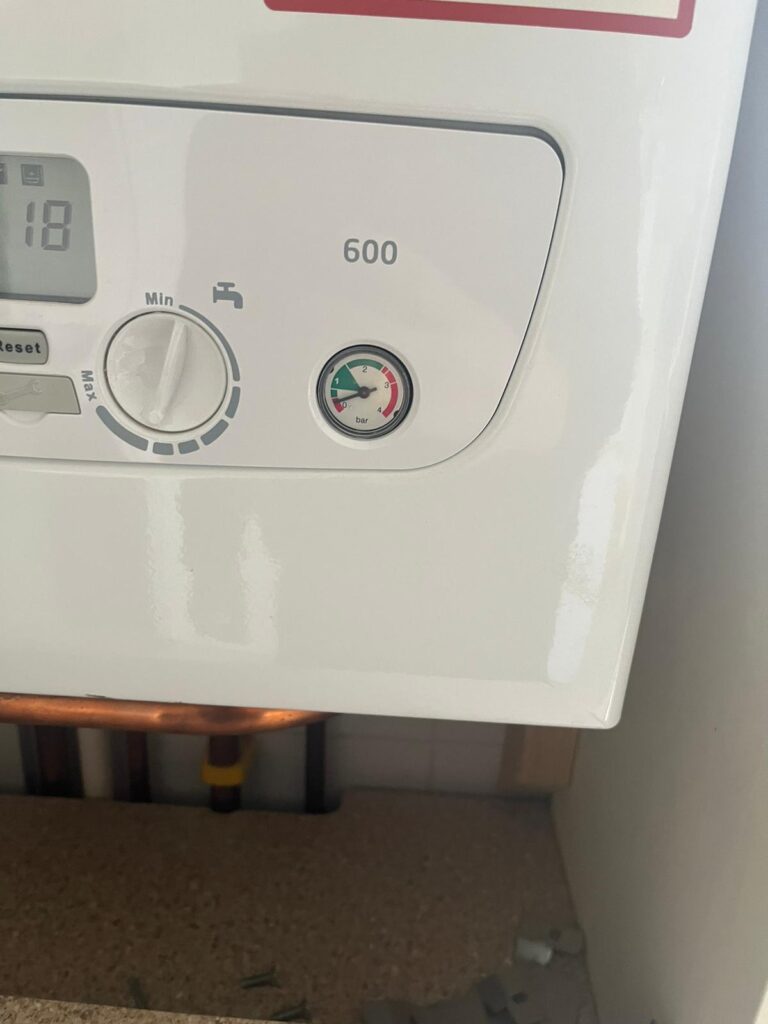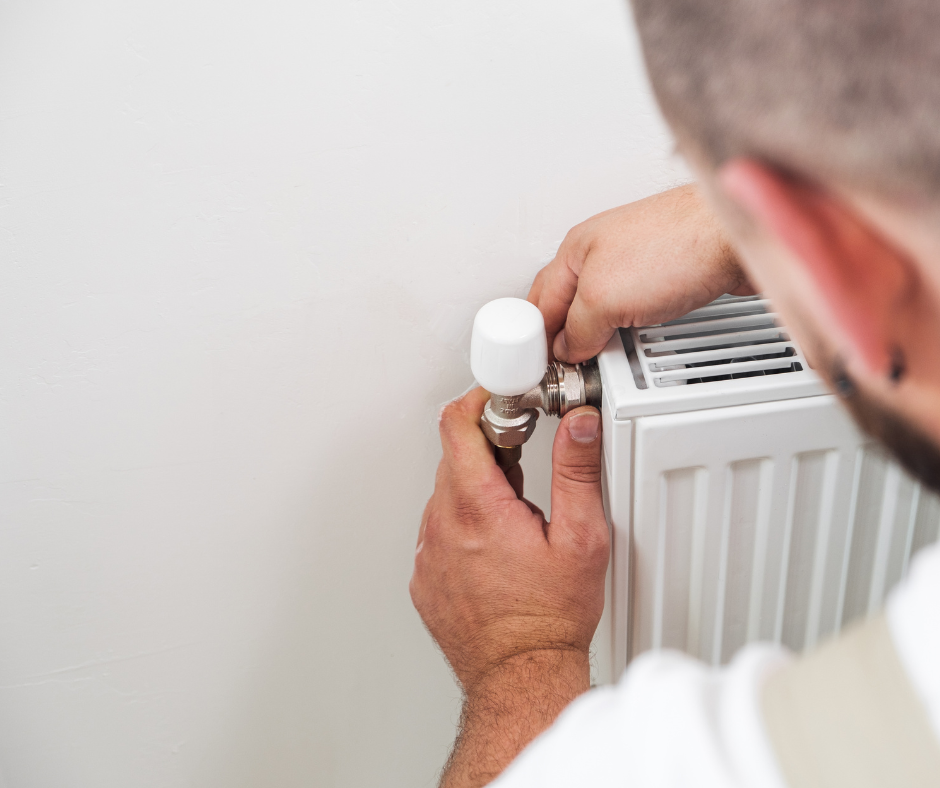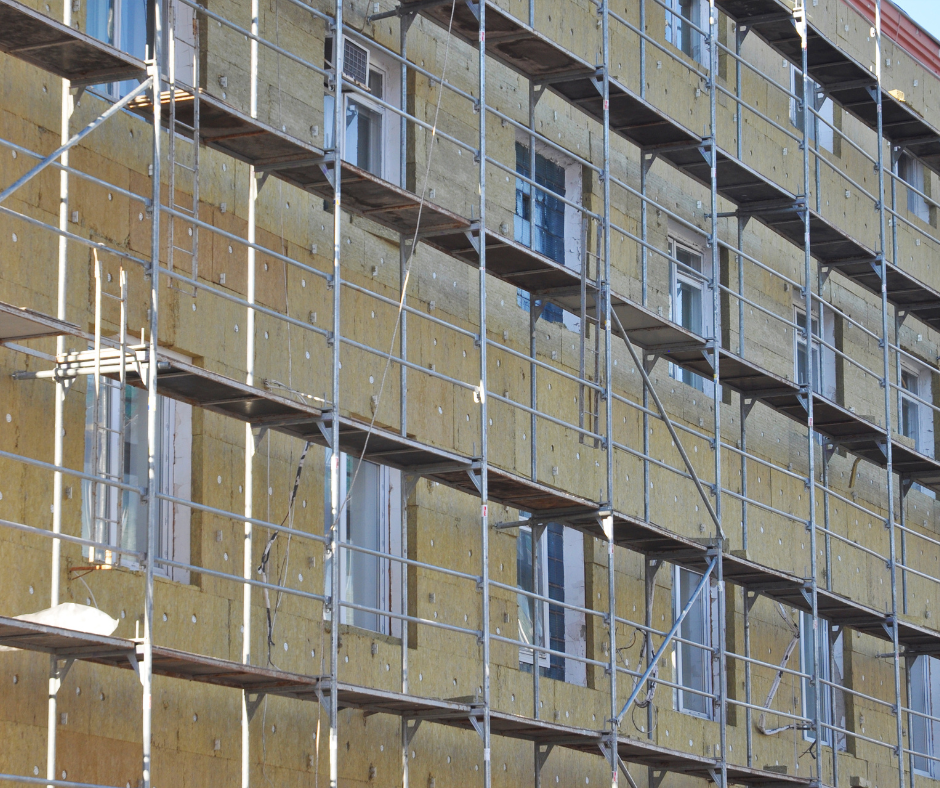What are the 5 most common causes of my central heating not working?
Dirty and clogged Systems –
For central heating to work efficiently it relies on a clear path and good flow around the system. Restrictions caused within the system due to blockages can at best create cold areas and at worst stop the system from working completely. You may notice that the boiler or the heating source is working but the room isn’t getting as warm as it should, a simple check would be check the temperature across the radiator. Radiators temperature being hot at the top but cold at the bottom is generally a good indicator that the system is partially blocked. Sediments, sludge, rust and other matter formed within the system tend to be heavy and sink to the bottom of the radiator. If not treated this tends to build up over time to completely block the system and particles will flow back into to your boiler or other heating source and cause damage to the components. Power flushing is the most effective method of removing any blockages and the installtion of magnetic filter is also an effective way of protecting your heating source.
Trapped air within the system –
Unvented or pressurised systems rely on optimal pressure within the system to operate. This optimal pressure is typically 1.5 Bar across most systems. Low pressure prohibits the system from operating correctly and in most modern systems generate an error code. High pressure will generate a different set of issues which typically start from the pressure relief valve of the system being activated and loss of operation. Whilst low pressure can be caused by relatively trivial issues such as small leak where water escapes the system and is displaced by air, high pressure tend to be more serious and associated with a faulty component eg incorrectly pressurised or faulty expansion vessels.
Trapped air within the system like above can create a partially warm radiator but in this case the radiator tends to be hot at the bottom and cooler at the top. This is a good indication that there is air within the system as air is lighter and raises to the top. It can also be deduced by looking at the pressure gauge

Although the optimal pressure for most systems is 1.5 Bar most can operate from 0.8 Bar +. This drop in pressure generally indicates displacement of air within the system. It is important to note the mentioned pressures in this section are under the assumption of the system is at room temperature. A system that is operational and supplying heat for sometime will show different readings, this because heat expands the water within the system and this will typically display a higher pressure reading. Whilst bleeding the system is easiest way of removing trapped air, most end user tend to neglect the other important factor which is repressurising the system. And whilst most end users also tend bleed and repressurise the system we always recommend that both low and high pressure issues should be consulted with a qualified heating engineer and any errors can cause further damage to the components.
Faulty Ball Valves –
Although vented systems do not work on a minimum operating pressure they rely on sufficient water within the system to circulate the heat around. This water is supplied by a header tank or a Feed and Expansion (F&E) tank. The water within this tank is regulated by a ball valve and a faulty ball valve can prevent the water within this tank filling up and supplying the heating system. A simple visual check of this tank can determine if this the case and it is a relatively easy fix.
Faulty Room Thermostat –
Whilst these are not fitted to all systems, most modern and energy efficient installations incorporate a Room Thermostat. Although the name can be deceiving a room thermostat does not just control the temperature of one room but the property as a whole and it does so effectively when fitted with other controls such as TRVs. Faults with these thermostats could be common cause for loss of heating and the cause could be mechanical or electrical issue. A simple check on mechanical versions of these stats can be carried out by the end user. Switching between high and low setting should produce an audible clicking sound, failure would tend to suggest there is a mechanical issue with the thermostat. Electrical faults are harder to investigate but In all circumstances we recommend consulting with a qualified heating engineer to assess and resolve any faults
Mechanical thermostats are typically wired directly to the boiler or linked via wiring centre connected to a programmer, however some systems are fitted with a wireless or RF thermostats. These typically include a receiver wired direct to the boiler’s power supply and a battery powered display/control unit that is portable. Two common issues with these can be easily diagnosed and resolved by the end user and these tend to be loss of signal between the two units and low battery on the display/control unit. Loss of radio frequency signal can happen for a variety of reasons but resetting (usually holding the reset button situated on the front of the receiver for a few seconds) can sometimes resolve the issue. The second issue is pretty self explanatory which replacing with new batteries can resolve.
Seized Pumps or Zone Valves
– The unexpectedly long summer is finally over and you feel a sudden chill in the air. Whilst you were conveniently able to ignore the ever Rising Gas Prices and the Cost of Living Crisis you have no choice to switch your system to heating mode only to find out that it doesn’t work. This is a common issue experienced but household during the months of September onwards. The summer period are a good time to save on energy consumption but mechanical components such as pumps and zone valves can remain idle meanwhile exposed to the somewhat contaminated system water and limescale. During this time these parts can seize up and when initiated do not operate. In some circumstances an experienced heating engineer can restart these parts but on occasions they are beyond repair and require replacement. Whilst an end user without the required experience or qualifications should not tackle this there is a simple precautionary step that can be taken in order to prevent the issue from reoccurring. Even when not in use it is good practice is to switch on the heating system every two weeks for just a few minutes to allow these parts operations and circulation of water. This issue is relatively rare with combination boilers as these components are fitted within the boiler and simple use of hot water switches the pump and internal zone valve (diverter valve).



